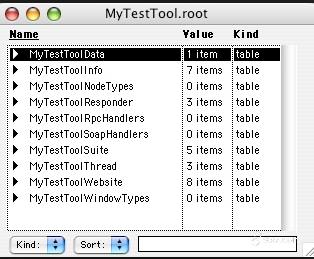

The OPML Editor can be used to edit scripts, and if you're writing scripts you need to be able to add comments. Screen shots: Right-clicking on a song, user, RSS channel. To edit your custom right-click menu, choose Edit Right-Click Menu from the Developers sub-menu of the Tools menu. There's also a special menu where you can add your own commands that will always be there when you right click. There are commands that only apply to songs, and those that only apply to users, and RSS feeds, and so on. Right-click menus are also called "contextual menus" because what you see in them depends on what you clicked on. On one-button Macs, hold down the Control key while clicking on the object.
OPML EDITOR ONLINE WINDOWS
On Windows and Macs with two-button mice, you can "right-click" on something by pointing at the object and clicking on the right mouse button. If, instead, it is an OPML file, the file opens as an outline and the tags are hidden. When you save, it saves as XML, it doesn't convert the outline to OPML format. If it's not an OPML file, you see the XML as it is stored in the file. When you choose the Open command, and the file you're opening has a. The OPML Editor can also be used to edit any XML file in the outliner. The specific HTML tags that it generates are:, ,, and. If you want to switch modes and see all the HTML tags, choose the Format Text command in the HTML menu, its keystroke is Control-` (Cmd-` on Macintosh). And for the most common stylings, bold, italic, underline and linking, it displays the markup in a visible way. The HTML menu has many common formatting and linking commands, so you don't have to memorize complex codes.
OPML EDITOR ONLINE MAC
On a Mac hold down the Cmd key and click. To select more than one headline, on Windows, hold down the Control key and click on the headlines you want to select. The structure mode cursor is also called the "bar cursor" because it looks like a bar.

On Windows F2 toggles between text and structure mode. You can also use the mouse - if you're in text mode, click on the wedge to return to structure mode if you're in structure mode, click on the text to get the flashing caret. You can toggle between modes by pressing the numeric keypad's Enter key. There are two modes in the outliner: text mode, where the insertion point is a flashing caret and structure mode, where the cursor is shown as a black inverse bar. Most editing operations in the outliner can be undone. When you're done entering new lines, click on the wedge to the left of the headline. If you want to enter another line, press Enter. Use the reorganization commands to position the line exactly where you want. To add a new line to an outline, place the cursor above or near the point where you want to add the line, and press Enter. Tab and Shift-Tab to move a line to the right and left. Move a line to the left (it becomes the next sibling of its former parent). Move a line to the right (it becomes the last subhead of the line above it). You can also use the keyboard to regorganize. When you let up on the mouse, the line moves to its new location. If you nudge the mouse to the right, the arrow now points to the right. Note that its wedge turns into an arrow, indicating where the line will be dropped. To reorganize with the mouse, point at the wedge of the line you want to move. When you move a line, all the lines underneath it move also, whether or not they're expanded. You can move a line using the mouse or with command keys. The illustration below shows an outline with a headline collapsed, and the same outline with the headline expanded. To expand a line, double-click on the wedge. Any black wedge can be expanded, it has information collapsed underneath it. Controlling detailĪs you look at an outline, scan down the left edge looking for black wedges. Here's a screen shot of the outline as it opens. To try out the instructions on this page, choose Open URL from the File menu, and enter this URL:
OPML EDITOR ONLINE INSTALL
Getting startedįirst, if you haven't already done so, download and install the OPML Editor application. The outliner has commands that make it easy to browse and reorganize structured information. The grouping is arbitrary and totally up to you. Outlines are just lists of lists, carried on to as many levels as you want. The OPML Editor is an outliner, which is a text editor that allows you to control the level of detail that's visible, and allows you to reorganize text according to its structure.


 0 kommentar(er)
0 kommentar(er)
